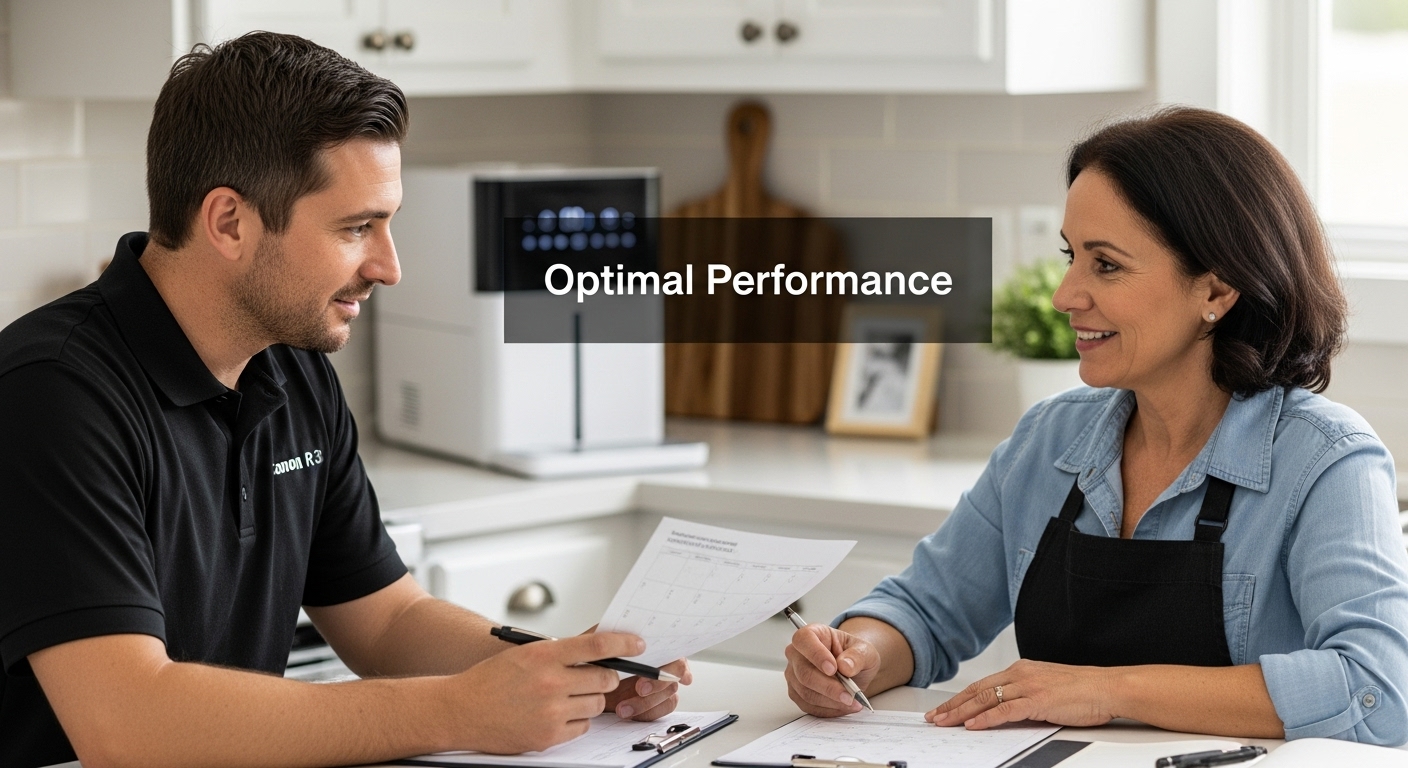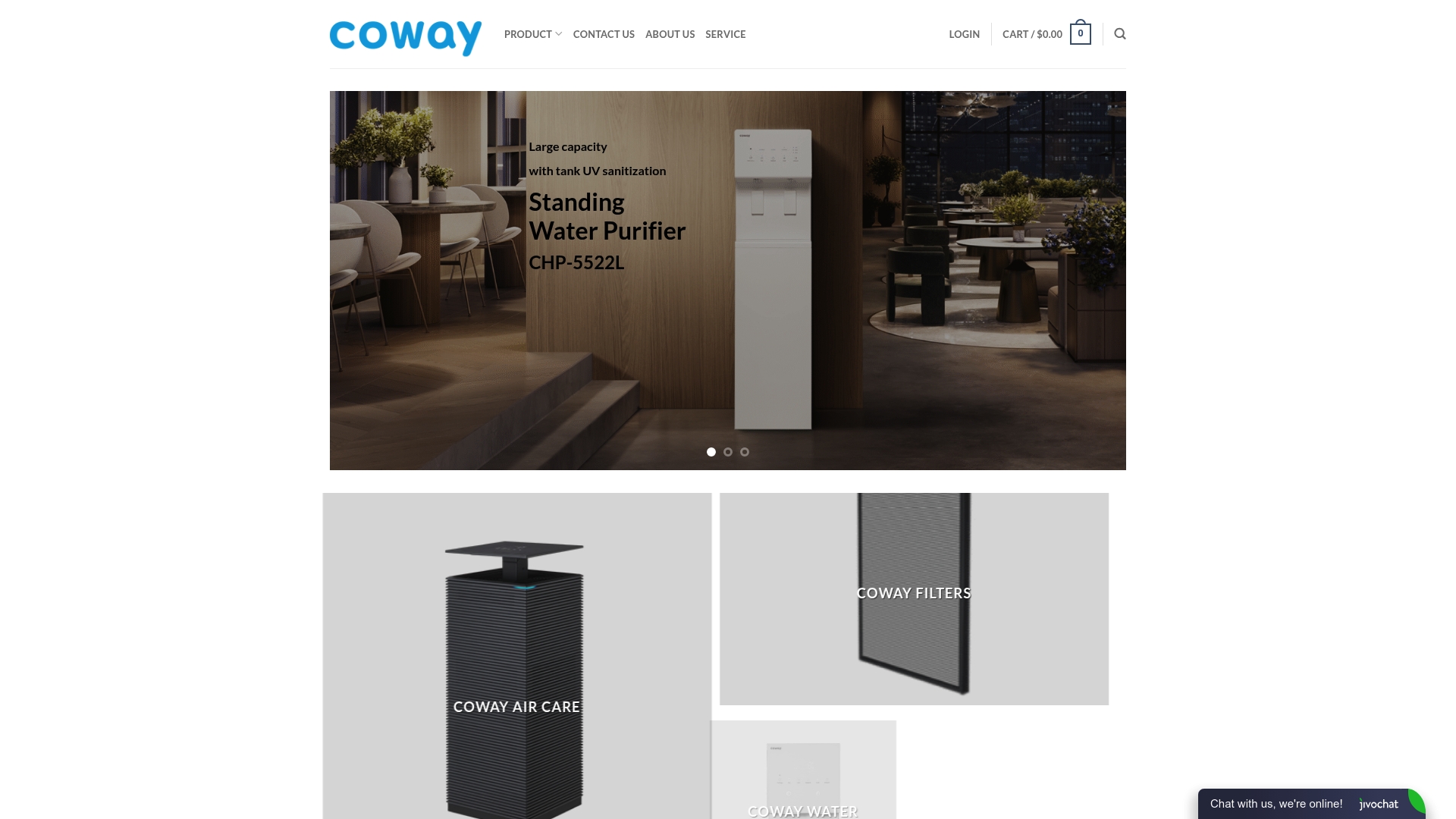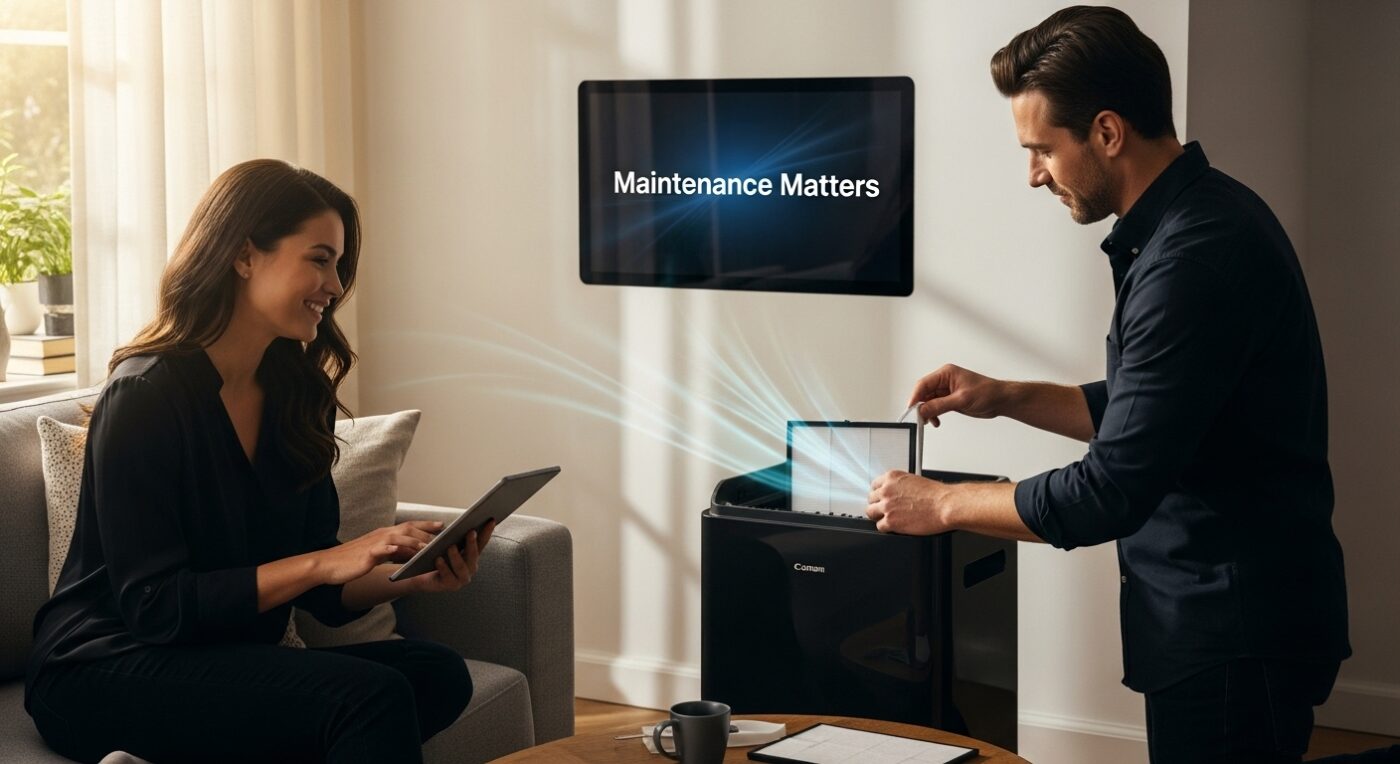Uncategorized
Understanding Why Maintenance Matters for Purifiers
Most people think their homes are a safe retreat from outdoor pollution. But studies show indoor air can be up to five times more polluted than the air outside, harboring invisible threats like dust, bacteria, and allergens. The twist is that the very purifier meant to protect you can become a hidden danger if it is not properly maintained.
Table of Contents
- The Role Of Purifiers In Health And Wellness
- Why Regular Maintenance Is Essential
- How Purifiers Function And Filter Contaminants
- The Consequences Of Neglected Maintenance
- Key Maintenance Practices For Optimal Performance
Quick Summary
| Takeaway | Explanation |
|---|---|
| Air purifiers drastically improve indoor air quality | Equipped with HEPA filters, air purifiers can eliminate at least 99.97% of airborne particles, ensuring cleaner air for healthier living. |
| Regular maintenance is crucial for effectiveness | Without proper upkeep, purifiers can lose up to 30% of their performance in six months, leading to compromised air quality. |
| Neglected filters can harm health | Unmaintained purifiers may breed microbes and release contaminants, transforming them into potential health hazards instead of protectors. |
| Implement a comprehensive filter management strategy | Regular inspections and timely filter replacements can significantly enhance the efficiency and longevity of air purifiers. |
| Proactive care extends purifier lifespan | Consistent maintenance is an investment that ensures ongoing air quality protection and prevents costly repairs or replacements. |
The Role of Purifiers in Health and Wellness
Purifiers represent a critical technological solution for improving indoor environmental quality, directly impacting human health and wellness. These sophisticated devices function as guardians against microscopic threats, filtering out potentially harmful particles and contaminants that can compromise respiratory and overall well-being.
Protecting Indoor Air Quality
Indoor air can harbor numerous pollutants that are invisible to the naked eye. Research from the U.S. Environmental Protection Agency indicates that air purifiers equipped with HEPA filters can remove at least 99.97% of airborne particles as small as 0.3 microns. This remarkable capability includes eliminating:
- Dust and pollen
- Mold spores
- Bacteria
- Microscopic allergens
By systematically removing these contaminants, purifiers create a cleaner breathing environment that reduces potential health risks associated with poor air quality.
Comprehensive Health Benefits
The health implications of using purifiers extend far beyond simple air cleaning. A significant scientific study in the International Journal of Environmental Research and Public Health demonstrated that portable air purifiers can substantially reduce particulate matter levels, which correlates with decreased respiratory symptoms and improved overall wellness.
For individuals with allergies, asthma, or compromised immune systems, purifiers offer an additional layer of protection. Read more about how filtration technology supports wellness, creating environments that actively contribute to health maintenance and disease prevention.
Purifiers are not just appliances but proactive health management tools that transform indoor spaces into sanctuaries of clean, breathable air. By systematically removing harmful particles, they play a crucial role in maintaining personal health and creating safer living environments.
Why Regular Maintenance is Essential
Regular maintenance of purifiers is not merely a recommendation but a critical practice to ensure optimal performance, longevity, and sustained health benefits. Like any sophisticated technological system, purifiers require consistent care to maintain their effectiveness in protecting indoor air quality and supporting wellness.
Performance Degradation Without Maintenance
Without proper maintenance, purifiers gradually lose their ability to filter contaminants efficiently. According to research from the National Air Filtration Association, neglected filtration systems can experience up to 30% reduction in performance within six months of continuous use. This performance decline translates directly into compromised air quality and diminished health protection.
Key indicators of performance degradation include:
- Decreased airflow volume
- Increased energy consumption
- Reduced particle capture efficiency
- Potential release of trapped contaminants back into the environment
Long Term Cost and Health Implications
Preventing maintenance is often more expensive than consistent upkeep. Discover how proper filtration maintenance supports overall wellness through strategic filter replacements and system checks. Professionals recommend periodic professional assessments and routine self maintenance to:
- Extend purifier operational lifespan
- Maintain peak filtration efficiency
- Prevent costly system breakdowns
- Ensure continuous indoor air quality protection
Regular maintenance represents an investment in health, technology, and long term environmental quality. By dedicating time and resources to systematic purifier care, users protect not just their device but their immediate living environment and personal well-being.
How Purifiers Function and Filter Contaminants
Purifiers represent sophisticated technological systems designed to systematically remove harmful particles and improve indoor air quality through advanced filtration mechanisms. These devices operate using multiple stages of filtration, each targeting different types of airborne contaminants with precision and efficiency.
Multilayered Filtration Technologies
Research from environmental science publications reveals that air purifiers utilize complex multilayered filtration strategies to capture microscopic pollutants. The primary filtration mechanisms include:
- Mechanical filtration using HEPA filters
- Activated carbon absorption for chemical compounds
- Electrostatic precipitation for charged particles
- UV light sanitization for biological contaminants
Each filtration layer performs a specialized function, working collaboratively to create comprehensive air cleaning solutions. HEPA filters, for instance, can trap particles as small as 0.3 microns with an exceptional 99.97% efficiency rate.
Comprehensive Contaminant Removal Process
The air purification process involves drawing contaminated air through strategically designed filter networks. As air passes through these layers, different filtration technologies systematically remove various pollutant types. Explore detailed water purification terminology to understand the intricate science behind these advanced cleaning mechanisms.
The removal process targets a wide spectrum of airborne threats, including:
- Allergens like pollen and pet dander
- Microscopic dust particles
- Volatile organic compounds
- Bacterial and viral particles
- Smoke and chemical residues
By employing multiple filtration technologies, purifiers create a comprehensive defense system against indoor air pollution, transforming potentially harmful environments into clean, breathable spaces.
The Consequences of Neglected Maintenance
Neglecting purifier maintenance transforms these vital health protection devices from guardians of indoor air quality into potential sources of environmental contamination. When maintenance becomes an afterthought, the sophisticated filtration systems designed to protect human health can rapidly deteriorate, creating unexpected and potentially dangerous consequences.
Compromised Filtration Performance
According to the Environmental Protection Agency, unmaintained air purifiers can become breeding grounds for microbial growth and pollutant recirculation. Filters that are not regularly cleaned or replaced lose their ability to effectively capture airborne contaminants, leading to significant performance degradation.
The most critical performance losses include:
- Reduced particle capture efficiency
- Increased energy consumption
- Higher operational stress on internal components
- Potential release of accumulated pollutants
Health and Financial Implications
The consequences of maintenance neglect extend beyond device performance, directly impacting personal health and financial investment. Dirty or clogged filters can transform purifiers from protective mechanisms into potential health risks. Learn more about filter maintenance for optimal wellness, as accumulated contaminants can potentially cause:
- Respiratory irritation
- Increased allergy symptoms
- Potential exposure to trapped pollutants
- Accelerated device deterioration
Proactive maintenance represents an essential investment in both technological longevity and personal health. By understanding and addressing the risks of neglect, users can ensure their purifiers continue functioning as effective guardians of indoor air quality.
![]()
Key Maintenance Practices for Optimal Performance
Maintaining purifiers requires a systematic approach that combines regular inspection, strategic cleaning, and timely component replacement. These practices are not merely recommendations but essential strategies to preserve the device’s efficiency, longevity, and health protection capabilities.
Comprehensive Filter Management
Research from indoor air quality experts emphasizes the critical role of filter maintenance in sustaining purifier performance. Professional recommendations suggest implementing a comprehensive filter management strategy that includes:
- Regular visual inspections for dust accumulation
- Tracking filter usage duration
- Understanding manufacturer recommended replacement schedules
- Monitoring device performance indicators
Additionally, different filter types require unique maintenance approaches. HEPA filters, activated carbon filters, and pre-filters each demand specific care protocols to maintain their optimal filtration efficiency.
To clarify how different filter types contribute to purifier efficiency and maintenance needs, the following table summarizes key characteristics and care recommendations for the main filters used in modern purifiers.
| Filter Type | Main Function | Particles/Contaminants Removed | Typical Lifespan | Special Maintenance Notes |
|---|---|---|---|---|
| HEPA Filter | Mechanical filtration of fine particles | Dust, pollen, allergens, bacteria | 6-12 months | Replace when visually dirty or as per manufacturer |
| Activated Carbon | Absorbs chemicals and odors | VOCs, smoke, certain gases | 3-6 months | Replace when odor or chemical breakthrough is noticed |
| Pre-Filter | Traps larger debris | Pet hair, visible dust, lint | 1-3 months | Clean or replace frequently to protect main filters |
| UV Light | Destroys biological contaminants | Bacteria, viruses, mold spores | 12 months | Replace bulb as per manufacturer guidelines |
Systematic Cleaning and Performance Monitoring
Beyond filter management, comprehensive purifier maintenance involves regular cleaning and performance assessment. Explore detailed maintenance guidelines to understand the nuanced approach required for different purifier models.
Key performance monitoring practices include:
- Checking airflow consistency
- Measuring noise level changes
- Evaluating energy consumption patterns
- Assessing overall filtration effectiveness
By adopting a proactive and systematic maintenance approach, users can ensure their purifiers continue functioning at peak performance, providing consistent protection against indoor air contaminants and supporting long-term health and wellness.

Secure Lasting Wellness with Trusted Purifier Maintenance
Have you ever wondered how quickly your air or water purifier can lose effectiveness without the right care? Neglected maintenance can reduce filtration performance, shorten the lifespan of your device, and put your health at risk by reintroducing pollutants back into your home environment. The article highlighted how routine filter replacement and regular checkups are critical to keep your purifier working at its best. If you are worried about complicated schedules or forgetting key steps, let us make it easier for you. See how Coway Water Purifier solutions are designed with your daily wellness in mind.

Choose convenience and peace of mind with Coway’s advanced purifiers and hassle-free service plans. From free delivery and installation to ongoing expert maintenance, our home wellness solutions help you stay worry-free about air and water quality. Act now to experience healthier living conditions. Visit our product category page today or learn more about how our full-service approach matches your long-term wellness goals at Coway Water Purifier.
Frequently Asked Questions
What are the health benefits of using air purifiers?
Air purifiers significantly improve indoor air quality by removing harmful particles such as dust, pollen, mold spores, and allergens. This can lead to reduced respiratory issues, improved allergy symptoms, and better overall wellness, especially for individuals with asthma or compromised immune systems.
Why is regular maintenance important for air purifiers?
Regular maintenance is essential to ensure optimal performance and longevity of air purifiers. Neglected filters can lose efficiency, leading to increased energy consumption, reduced airflow, and potential release of captured contaminants back into the environment, which can compromise indoor air quality.
How often should I replace air purifier filters?
The replacement frequency for air purifier filters depends on the type of filter and manufacturer recommendations. It’s typically suggested to check filters every 3 to 6 months, but maintaining a tracking system for usage duration can help determine the best time for replacement.
What are the signs that my air purifier needs maintenance?
Key indicators that your air purifier may need maintenance include decreased airflow volume, unusual noise levels, increased energy consumption, and poor filtration efficiency. If you notice any of these signs, it’s essential to inspect and maintain the device immediately.
Recommended
- 7 Essential Steps for Your Purifier Maintenance Checklist – Coway Water Purifier
- Essential Water Purification Maintenance Schedule for 2025 – Coway Water Purifier
- Understanding Why Change Purifier Filters Matters for Health – Coway Water Purifier
- 7 Essential Water Filter Maintenance Tips for Homeowners – Coway Water Purifier

